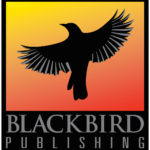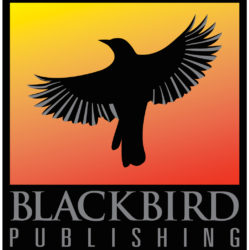
Now available via BundleRabbit as part of The Faerie Summer bundle.
Find the author at:
Website | Twitter | Amazon | Goodreads
Greetings! I am freelance writer, editor, and designer DeAnna Knippling; I am interviewing authors for for Blackbird Publishing because a) thumbscrews and b) bribery.
Today’s author is Steve Vernon, whose story “The Wishing Ring of Old Queen Maab” is available in the Faerie Summer Bundle on BundleRabbit and other sites.
The questions:
While this was a bundle all about faeries (i.e., otherworldly fae creatures), yours was the most fairy-tale (i.e., folk tale) faerie tale of the bunch. Was that deliberate? Faeries and fairy tales don’t always overlap, so this is not an idle question. Faeries don’t always teach us lessons, unless it’s “well, that was random…maybe don’t go looking for the Fae.”
Steve: I guess that I am just plain in love with the old traditional fairy tale, and when Jamie Ferguson (the BundleRabbit curator), asked me for a tale of the Fae, I just went with my strong point and ran straight for a fairy tale. The truth is, I didn’t realize I was being all that different than any of the other contributors. When I put together my next story, for the next collection of Fae stories, I might try to do things a little differently and learn from my mistakes.
Which fairy tales, if any, did you draw from? There were a couple of places where I went, “Arabian Nights? Game of Thrones? Er…R.A. Lafferty? Carnivale?”
Steve: Oh gosh, I don’t have the kind of catalogue in my brain that could tell you exactly which style of fairy tale that I drew from. Or, if I do have that kind of a catalogue in my brain, the pages are most likely water-logged and swollen into oblivion. The “wishing ring” story itself is loosely based upon a tale with both French and Celtic roots, but I tend to throw in whatever I think fits into a story like this. I cook my stories like a good pot of soup, throwing in whatever suits my fancy or happens to be in the refrigerator. My mind is a bit of clutter-box and I tend to hoard folklore and I throw it like fistfuls of steaming wet pasta, at the half-open cupboard doors of my story as I write it.
I occasionally mix metaphors, just as freely and frequently as I feel.
What are your favorite faerie- or fairy-tale retellings? Or do you prefer them to be the kind of stories that head off cackling into new territory?
Steve: I am a big fan of Neil Gaiman. No modern writer that I can think of does a better job of retelling old folklore. I also draw a lot of inspiration from Bill Willingham’s comic book series, Fables. But, if I had to narrow my choice down to a single favorite I would have to lean towards something that certain young readers might find a little bit obscure. I am talking about the 1971 television series, Story Theater, that retold ancient fairy tales and fables with the help of actors such as Alan Alda, Avery Schreiber, Peter Bonerz and Valerie Harper. Their bare-bones adlib homespun storytelling really captured my young imagination.
I wonder if anybody out there remembers that television series. For some reason it has NEVER been collected in DVD format. I have a hunch that the episodes are tied up in some weird ownership dispute.
I know that fairy tales are supposed to be teaching tools, but…they also scratch an itch for the reader. (I mean, they must; they’ve survived over hundreds of years.) What, to you, is the itch that a fairy tale (not necessarily a faery tale) scratches?
Steve: Telling a good fairy tale is like painting with water color. It is a very forgiving medium. A well told fairy tale is a like a spool of fresh cotton candy, all poof and sugar and transient sweetness. I leave the teaching to smarter folk than myself.
Do you feel like you had to adjust your style in order to pull off this book? In other books of yours, you seem to have a more complex style, but I spotted a couple that feel pretty stripped down. Who is your favorite traditional fairy-tale teller?
Steve: I am pretty sure I didn’t adjust too much with this story. I had told it once or twice, and had originally written it down for the second wedding ceremony of an old friend, although the names were changed. It had just been sitting there in the attic of my imagination, just waiting to be written down.
As for my other books, they are all over the map. It is a failing of mine, I am afraid. You pick up a book by Steve Vernon and there is no telling what sort of a style you are going to encounter. Some of that variation is dictated by market. For example, I have seven regional Nova Scotia books, released by a local publisher here in Halifax (Nimbus Publishing), that I have to scrupulously avoid any Americanisms and/or four letter words.
and last but not least, the bonus question:
Is there any note that you’d like to leave your readers on?
Steve: Well, it is my birthday this month and for the entire month of August 2017 I have marked down all of my independently released Kindle e-books to 99 cents. [Ed. — Some of the books are also free.] So if you were looking to try out any of my indie book releases this is the month to do it!
…

Steve Vernon has been writing and telling stories for over forty years. If you want to picture him just think of that old dude at the campfire spinning out ghost stories and weird adventures and the grand epic saga of how Thud the Second stepped out of his cave with nothing more than a rock in his fist and slew the saber-toothed tiger. If you want to help Steve Vernon out then go and buy Steve’s books. Buy them quickly. His family is beginning to wonder just when the heck Steve is going to get around to getting himself a REAL job.
…
 DeAnna Knippling is a freelance writer, editor, and book designer living in Colorado. She runs Wonderland Press, a micropublisher of curious fiction and non-fiction for iconoclasts.
DeAnna Knippling is a freelance writer, editor, and book designer living in Colorado. She runs Wonderland Press, a micropublisher of curious fiction and non-fiction for iconoclasts.

Sign up for the Blackbird Publishing newsletter!
